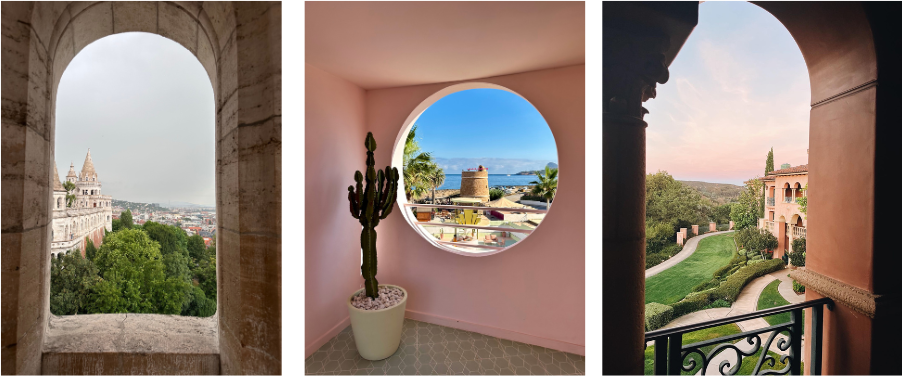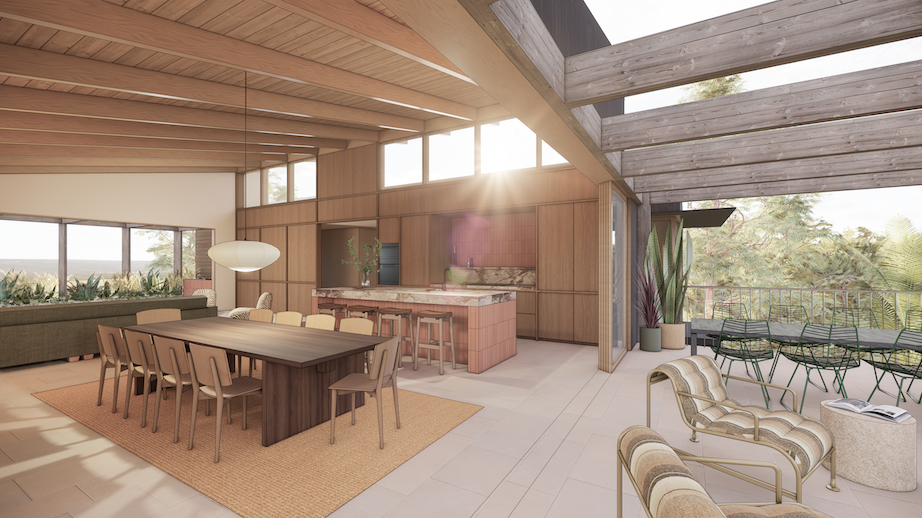Embracing Summer - 5 Secrets to seamless indoor-outdoor living
Sydney's stunning climate and natural beauty make it the perfect place to embrace indoor-outdoor living, especially as we approach the festive season and long summer days. Whether you're nestled in the Northern Beaches or perched in the bush of the North Shore, connecting your home's interior with the great outdoors can transform your living experience and elevate your entertaining game. Here are five sophisticated ways to maximise the flow between your indoor and outdoor spaces, creating a harmonious home that celebrates the Australian lifestyle and sets the stage for unforgettable gatherings.
1. Continuity in Materiality
The secret to a seamless transition between indoors and outdoors lies in the continuity of materials. Natural stone tiles or hardwood decking are excellent choices that withstand Sydney's coastal conditions while looking effortlessly chic. A sandstone feature wall that begins in your entryway and continues to your outdoor entertaining area not only creates visual flow but also provides a stunning backdrop for summer soirées.
2. Thoughtful Threshold Design.
The devil is in the details, especially when it comes to thresholds. Work closely with your designer and builder to ensure a smooth, trip-free transition over door sills. Consider flush thresholds where indoor and outdoor flooring meet at the same level. This seamless transition not only looks sleek but also allows for easy movement when you're carrying platters of food or trays of drinks to your outdoor dining area.
3. Framing the View.
While floor-to-ceiling glass is a popular choice, don't overlook the power of strategically framed views. As you move through your home, consider what you see at key points. The view from the top of your stairs could capture a glimpse of the sparkling pool through a carefully positioned window. A long hallway might terminate with a framed view of your lush garden. These moments of connection with the outdoors create a sense of anticipation and movement through your space, delighting both residents and guests alike.
4. Thoughtful Placement: Furniture That Facilitates Flow.
The right furniture can enhance the flow between indoor and outdoor spaces and set the stage for summer entertaining. Instead of blocking the view with a solid couch, consider swivel chairs that allow for flexible viewing of both the interior and exterior - perfect for keeping an eye on the barbecue while chatting with guests inside. A long, low ottoman can provide extra seating for larger gatherings without obstructing sightlines. For outdoor areas, choose furniture that complements your interior style – perhaps a dining set that could work just as well indoors, blurring the lines between spaces and allowing you to host dinner parties that spill effortlessly from one area to another.
5. Climate-Responsive Outdoor Spaces
Sydney's climate is generally mild, but protection from the elements is crucial for truly functional outdoor living and year-round entertaining. Design outdoor spaces that respond to the local climate – consider retractable awnings for sun protection during scorching summer afternoons, glass screens for wind shelter in breezy areas, and clever landscaping for privacy. A well-designed outdoor space should be comfortable year-round, allowing you to enjoy the outdoor lifestyle in every season - from summer brunches to cozy winter gatherings around a fire pit.
By implementing these design strategies, you can create a home that truly embraces Sydney's indoor-outdoor lifestyle and becomes the ultimate entertainment space. These techniques will help you make the most of your location, enhancing your daily living experience and creating a space that's perfectly attuned to its environment and primed for hosting memorable events.
Remember, while these tips can guide you, working with a professional who understands Sydney's unique environmental conditions and lifestyle can elevate your project to new heights.
3D renders: Elo Architecture.









